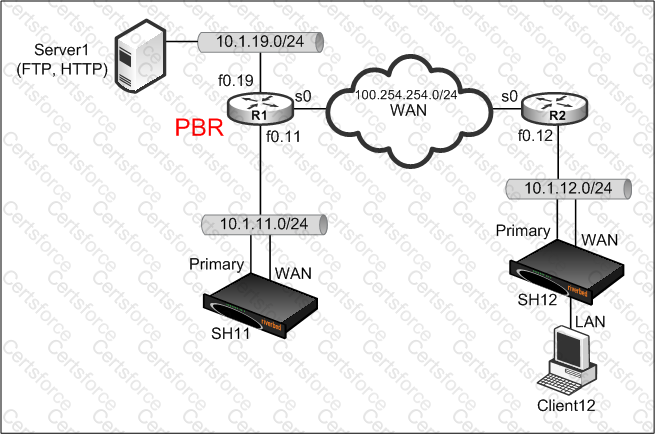Simplified routing learns to associate MAC addresses to IP addresses by: (Select 2)
Refer to the exhibit.

The customer would like to prevent a “black-holing” situation when using PBR when SH11 goes down. The Steelhead appliances are directly connected to the routers. What options are available to determine state level status of the Steelhead appliance? (Select 3)
The port used by the Steelhead appliance for connection forwarding is:
What is the default authorization policy used by Steelhead appliances?
When Connection Forwarding is in use, when a neighbor fails, the default behavior of the remaining neighbor will be to:
You choose to deploy a Steelhead appliance logically in-path using policy-based routing (PBR) as the traffic redirection method. Additionally, you want to mark the Type of Service (ToS) value for active FTP as AF21 using route-maps. Which route-map specified Type of Service (ToS) value is correct? (Hint: Use the calculator)
In a Steelhead appliance deployment, the customer decides to use Full Transparency and block all incoming/outgoing TCP connections on port 7800 on their firewall. However, they are finding all TCP connections are passing through the Steelhead appliances (even ones that should be optimized via the in-path rule set).
If Full Transparency uses the original IP addresses and TCP ports for inner connections, what is the most likely cause of all TCP connections passing through the Steelhead appliances?
What is the primary purpose of Connection Forwarding in WCCP deployments with multiple Steelhead appliances in a single cluster? (Select 2)
Which of the following methods can be used to reduce the load on a router configured to use outbound interface WCCP redirection? (Select 3)
The fair peering feature on Interceptor appliances can be enabled: